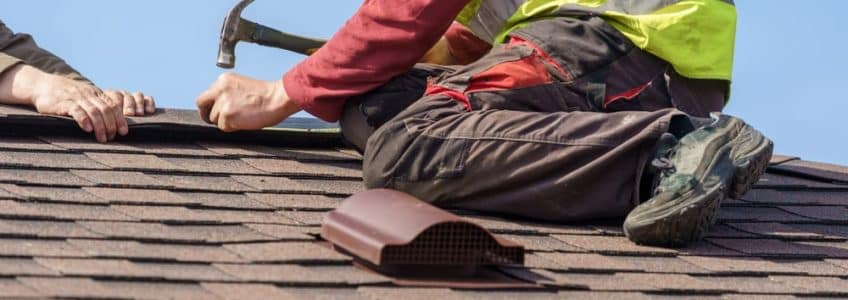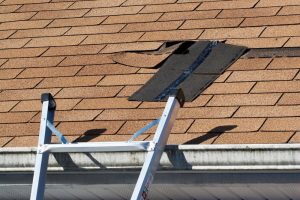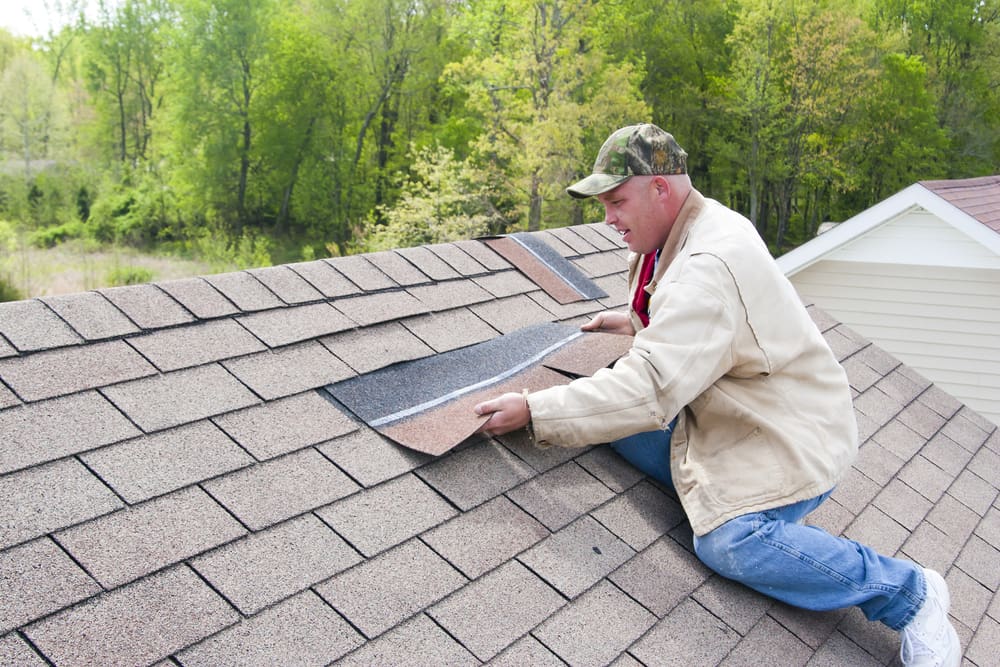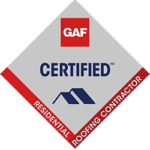
Have you ever wondered what to do if your roof is leaking during a storm? It’s a question many homeowners find themselves asking during inclement weather.
Your roof is one of the most important parts of your home. It protects you from the elements and keeps your family safe. That’s why you should take action when it starts leaking during ice and snow storms.
Storms can damage your home quite badly. Water alone can cause extensive damage to your home, both inside and out. Fortunately, there are a few things you can do to prevent further damage. Here’s what to do when your roof leaks during a storm.
Act Quickly
If you need to know what to do if your roof leaks during a storm, act quickly. Storms can cause incredible damage. If you see signs of a leak-whether you have a roof leak during an ice storm or your roof is leaking after an ice storm- take fast and decisive action. The longer you wait, the more damage the leak will cause. Not to mention, water can quickly spread throughout your home and cause additional damage. While everyone should know some basic emergency roof repairs, you may need to bring in an expert.
Protect the Interior of Your Home
Once you’ve noticed your roof is leaking during a storm, take steps to protect the interior. Move any valuables or sensitive items out of the way of the leak. Remove things such as:
- Paintings
- Electronics
- Important documents
Allowing interior items to become soaked can cause irreparable damage. Long-term damage may include mildew and mold. In addition, it’s a good idea to put down towels or other absorbent materials to help soak up any water that does make its way inside.
Ease Water Pressure on Your Ceiling
If your roof leaks during a storm, and your ceiling sags or shows signs of water damage, act fast to prevent further damage. One way to ease the pressure on your ceiling is to cut a hole. Doing so will help release some water and prevent your ceiling from collapsing.
You can accomplish this by using a utility knife or a saw. Be sure to cut away from any beams or supports. Once you’ve made the initial cut, you can use a piece of plywood or another board to create a larger opening. A screwdriver works well for this purpose.
Don’t create a large hole! Make it big enough to allow water to drain out but small enough that it won’t cause further damage. Use a bucket to catch any water that drains out and then empty it as needed.
Of course, this is not a permanent solution. It will buy you some time until a professional can come and take a look at the damage.
Look for the Source of the Leak

Once you’ve determined what to do if your roof leaks during a storm, turn indoors. After protecting the interior of your home, it’s time to start looking for the source of the leak. It isn’t always an easy task, especially if the leak is small.
The best place to start looking for leaks is in your attic. Look for any signs of water damage, such as stains on the ceiling or walls.
Another good place to look is around windows and doors. Gaps or cracks in these areas can often provide clues about the leak.
If you don’t have an attic, you can try to locate the source of the leak by going outside and inspecting your roof. Once you’ve found the source of the leak, it’s time to take action.
Tarp Your Roof
If your roof leaks during a storm, you need to protect it. One way to prevent further damage from a roof leak during an ice or snow storm is to tarp the roof. It will help keep water from coming into your home and causing additional damage. You can purchase a tarp at most hardware stores.
Some types of storms make climbing up onto the roof too dangerous. For example, if you discover a roof leak during an ice storm, you shouldn’t climb up on your roof. If you discover a roof leaking after a snow storm, it will be safer to go and inspect the roof.
Either way, you can use temporary tape or caulking instead of a tarp. These tools will close any gaps and prevent water from entering.
Take Photos for Insurance Documentation
One of the most important things to do if your roof leaks during a storm is to document the damage.
If there is damage to the interior or exterior of your home, take photos for insurance and roofing warranty documentation. The images will help support any claims you need to file with your insurance company. Take pictures of any damaged items as well as the source of the leak if your roof leaks during a storm.
Determine if Your Insurance Company Covers Water Damage
Depending on the type of insurance you have, your coverage may cover damage caused by a roof leak. Most homeowners’ insurance policies cover water damage caused by severe weather. However, they typically don’t cover damage caused by a lack of maintenance even if your roof leaks during a storm.
If you’re not sure whether your policy will cover the roof leak, contact your insurance company.
Call a Professional Roofing Company
Still wondering what to do if your roof leaks during a storm or if your roof is leaking after a snow storm? Once you’ve taken all the necessary steps to prevent further damage, it’s time to call a professional roofing company. A professional can assess the damage and make any necessary repairs.
Keep in mind that repairing a roof leak after a snow or ice storm is not always a quick and easy process. In some cases, the damage may be extensive, and you may need to replace your roof entirely.
Continue Regular Roof Maintenance
After repairing your roof if your roof leaks during a storm, you should continue regular maintenance. Taking this action will help prevent future leaks and other damage. Be sure to have your roof inspected at least once a year.
You should also clear away any debris that accumulates on your roof. Objects like leaves and branches can cause water to pool on your roof. Debris can lead to leaks and other damage.
If you live in an area with severe weather, you may need to take additional steps to protect your roof. For example, you may need to install hurricane straps or tie downs. These tools help keep your roof secure during high winds.
By taking these precautions, you can help prevent future roof leaks during a storm or going through a stressful time during a heavy storm.

Final Thoughts
Now you know what to do if your roof leaks during a storm. Don’t wait to take action. Use these tips to prevent further damage and call a professional roofing company as soon as possible. If your roof has started leaking during a storm or you want to speak to an expert about how to prevent this from occurring, A to Z Construction is here for you. Contact us today to talk to a team member!









